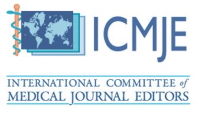Neurobiological and behavioral correlates of excessive social media use in adolescents
Impact of social media use on adolescents
Keywords:
Social Media, Addiction, Depression, Sleep Deprivation, Mental Health, Teenagers.Abstract
Background/Aim: Millions of teenagers around the world spend more time engaged with their social media accounts than ever before. This situation raises questions about the impact of social media on mental health. This systematic literature review explores the relationships among extreme social media use and addiction, depression, and sleep deprivation.
Methods: A thematic analysis of 38 peer-reviewed studies, all published between 2010 and 2024, was conducted. The selection of studies was based on their significance and relevance to teenage mental health, namely, neurobiological, psychological, and behavioral perspectives. The study categorized findings into three primary themes: compulsive digital behaviors (addiction), emotional distress (depression), and disrupted circadian rhythms (sleep deprivation).
Results: Extended social media exposure alters dopamine regulation, reinforcing addictive tendencies similar to substance dependence. Excessive usage correlates with heightened depressive symptoms, exacerbated by social validation pressures and algorithm-driven content cycles. Furthermore, late-night digital engagement contributes to melatonin suppression and chronic sleep debt, impairing cognitive function and emotional stability.
Conclusion: As serious mental health issues stemming from excessive social media content haunt society, it is essential to initiate effective coping strategies. Given the insights from the present study, the need for an awareness campaign, structured daily usage, and more neuroscientific studies to reduce the long-term impact of social media on adolescent well-being is acute.
Downloads
References
We Are Social. Digital 2023: Global Overview Report. 2023. Available from: https://wearesocial.com/wp-content/uploads/2023/03/Digital-2023-Global-Overview- Report.pdf
DataReportal. Digital 2024: Global Overview Report. 2024. Available from: https://datareportal.com/reports/digital-2024-global-overview-report
DataReportal. Digital 2024: The United States of America Report. 2024. Available from: https://datareportal.com/reports/digital-2024-united-states-of-america
Vogels EA, Gelles-Watnick R, Massarat N. Teens, social media and technology 2022. Pew Research Center; 2022. Available from: https://www.pewresearch.org/internet/2022/08/10 eens- social-media-and-technology- 2022/
HHS Office of Population Affairs. America’s diverse adolescents. U.S. Department of Health & Human Services; 2019. Available from: https://opa.hhs.gov/adolescent- health/adolescent-health-data/americas-diverse-adolescents
Martin F, Wang C, Petty T, Wang W, Wilkins P. Middle school students’ social media use. J Educ Technol Syst. 2018;47(1):1-17
Bulut D. The association between attention impairments and internet and social media usage among adolescents and young adults with potential consequences: A review of literature. Open J Psychiatry. 2023;13(2):1-10 DOI: https://doi.org/10.4236/psych.2023.148073
Onwuegbuzie AJ, Frels RK. Methodology of the literature review. Thousand Oaks, CA: Sage Publications; 2016
Snyder H. Literature review as a research methodology: An overview and guidelines. J Bus Res. 2019;104:333–9. doi:10.1016/j.jbusres.2019.07.039 DOI: https://doi.org/10.1016/j.jbusres.2019.07.039
Goldberg AE. The (in)significance of the addiction debate. Neuroethics. 2020;13(3):311– 24. doi:10.1007/s12152-019-09424-5 DOI: https://doi.org/10.1007/s12152-019-09424-5
American Society of Addiction Medicine. What is the definition of addiction? 2019. Available from: https://www.asam.org/quality-care/definition-of-addiction
Horseman C, Meyer A. Neurobiology of addiction. Clin Obstet Gynecol. 2019;62(1):118–27. doi:10.1097/GRF.0000000000000416 DOI: https://doi.org/10.1097/GRF.0000000000000416
Watson S. Feel-good hormones: How they affect your mind, mood, and body. Harvard Health. 2021. Available from: https://www.health.harvard.edu/mind-and- mood/feel-good-hormones-how- they-affect-your-mind-mood-and-body
Fiellin D. How an addicted brain works. Yale Medicine. 2022. Available from: https://www.yalemedicine.org/news/how-an-addicted-brain-works
Crocq MA. Historical and cultural aspects of man’s relationship with addictive drugs. Dialogues Clin Neurosci. 2007;9(4):355–61. doi:10.31887/DCNS.2007.9.4.macrocq DOI: https://doi.org/10.31887/DCNS.2007.9.4/macrocq
Levinstein E. Morbid craving for morphia: A monograph founded on personal observations. Harrer C, translator. London: Smith, Elder & Co.; 1878
Musto DF. Drug abuse research in historical perspective. In: Pathways of Addiction: Opportunities in Drug Abuse Research. Washington, DC: National Academies Press; 1996. Available from: https://www.ncbi.nlm.nih.gov/books/NBK232965/
Uhl GR, Koob GF, Cable J. The neurobiology of addiction. Ann N Y Acad Sci. 2019;1451(1):5–19. doi:10.1111/nyas.14129 DOI: https://doi.org/10.1111/nyas.13989
Henden E, Melberg HO, Rogeberg OJ. Addiction: Choice or compulsion? Front Psychiatry. 2013;4:77. doi:10.3389/fpsyt.2013.00077 DOI: https://doi.org/10.3389/fpsyt.2013.00077
Volkow ND, Warren KR, Ries RK, Fiellin DA, Miller SC, Saitz R. Drug addiction: The neurobiology of behavior gone awry. In: The ASAM Principles of Addiction Medicine. 5th ed. Philadelphia: Wolters Kluwer; 2014. p. 3–18
Cleveland Clinic. Addiction: Understanding its effects and treatment. 2023. Available from: https://my.clevelandclinic.org/health/diseases/6407-addiction
Armstrong L, Ackermann K, Fuller K, Kelley R, Thomas S, Regan J, et al., editors. Signs & symptoms of addiction (physical & mental). American Addiction Centers; 2024. Available from: https://americanaddictioncenters.org/adult-addiction-treatment- programs/signs
Bechara A. Decision making, impulse control, and loss of willpower to resist drugs: A neurocognitive perspective. Nat Neurosci. 2005;8(11):1458–63. doi:10.1038/nn1584 DOI: https://doi.org/10.1038/nn1584
Argyriou E, Um M, Carron C, Cyders MA. Age and impulsive behavior in drug addiction: A review of past research and future directions. Pharmacol Biochem Behav. 2018;164:106–17. doi:10.1016/j.pbb.2018.02.007 DOI: https://doi.org/10.1016/j.pbb.2017.07.013
Goodman MD. Addiction: Definition and implications. Br J Addict. 1990;85(11):1403– 8. doi:10.1111/j.1360-0443.1990.tb01620.x DOI: https://doi.org/10.1111/j.1360-0443.1990.tb01620.x
Panova T, Carbonell X. Is smartphone addiction really an addiction? J Behav Addict. 2018;7(2):252–9. doi:10.1556/2006.7.2018.49 DOI: https://doi.org/10.1556/2006.7.2018.49
Venton BJ, Seipel AT, Phillips PE, Wetsel WC, Gitler D, Greengard P, et al. Cocaine increases dopamine release by mobilization of a synapsin-dependent reserve pool. J Neurosci. 2006;26(12):3206–9. doi:10.1523/JNEUROSCI.5205-05.2006 DOI: https://doi.org/10.1523/JNEUROSCI.4901-04.2006
Akshay AF, Sudha S, Ajit S. Social media impact on students' academic performance based on sleeping hours. Int J Recent Technol Eng. 2019;8(4):S.2 DOI: https://doi.org/10.35940/ijrte.D1184.1284S219
Watson S. Serotonin: The natural mood booster. Harvard Health. 2023. Available from: https://www.health.harvard.edu/mind-and-mood/serotonin-the-natural-mood-booster
LeWine HE, editor. Oxytocin: The love hormone. Harvard Health. 2023. Available from: https://www.health.harvard.edu/mind-and-mood/oxytocin-the-love-hormone
Chaudhry SR. Biochemistry of endorphins. StatPearls [Internet]. 2023. Available from: https://www.ncbi.nlm.nih.gov/books/NBK470306/
Alavi SS, Ferdosi M, Jannatifard F, Eslami M, Alaghemandan H, Setare M. Behavioral addiction versus substance addiction: Correspondence of psychiatric and psychological views. Int J Prev Med. 2012;3(4):290–4
Kurniasanti KS, Siste PA, Assandi P, Ismail RI, Nasrun MWS, Wiguna T. Internet addiction: A new addiction? Med J Indones. 2019;28(1):82–91. doi:10.13181/mji.v28i1.2752 DOI: https://doi.org/10.13181/mji.v28i1.2752
Richter R. Among teens, sleep deprivation is an epidemic. Stanford Medicine News Center. 2015 Oct 8. Available from: https://med.stanford.edu/news/all-news/2015/10/among- teens-sleep- deprivation-an-epidemic.html
Watson S, Cherney K. 11 effects of sleep deprivation on your body. Healthline. 2023. Available from: https://www.healthline.com/health/sleep-deprivation/effects-on- body
Torres A, Catena A, Megías A, Maldonado A, Cándido A, Verdejo-García A, et al. Emotional and non-emotional pathways to impulsive behavior and addiction. Front Hum Neurosci. 2013;7:1–11. doi:10.3389/fnhum.2013.00043 DOI: https://doi.org/10.3389/fnhum.2013.00043
Shafer L. Social media and teen anxiety. Harvard Graduate School of Education. 2015 Dec 15. Available from: https://www.gse.harvard.edu/ideas/usable- knowledge/17/12/social-media-and- teen-anxiety
Abi-Jaoude E, Naylor KT, Pignatiello A. Smartphones, social media use, and youth mental health. CMAJ. 2020;192(6):E136–E141. doi:10.1503/cmaj.190434. DOI: https://doi.org/10.1503/cmaj.190434
Lee H, Kim S, Park J. Oxytocin and maternal behavior: Neuroendocrine mechanisms and clinical implications. J Neuroendocrinol. 2022;34(2):e13124. doi: 10.1111/jne.13124. DOI: https://doi.org/10.1111/jne.13124
Albright J. Digital dopamine: The addictive design of social media. Stanford Digital Wellness Report. 2019. Available from: https://digitalwellness.stanford.edu/reports/digital-dopamine
Canadian Institute for Health Information. Intentional self-harm among youth in Canada. 2018. Available from: https://www.cihi.ca/en/intentional-self-harm-among-youth-in-canada
Twenge JM, Joiner TE, Rogers ML, Martin GN. Increases in depressive symptoms, suicide-related outcomes, and suicide rates among U.S. adolescents after 2010 and links to increased new media screen time. Clin Psychol Sci. 2017;6(1):3-17. doi: 10.1177/2167702617723376. DOI: https://doi.org/10.1177/2167702617723376
Downloads
- 797 935
Published
Issue
Section
How to Cite
License
Copyright (c) 2025 Daniel Ogun
This work is licensed under a Creative Commons Attribution-NonCommercial-NoDerivatives 4.0 International License.
















